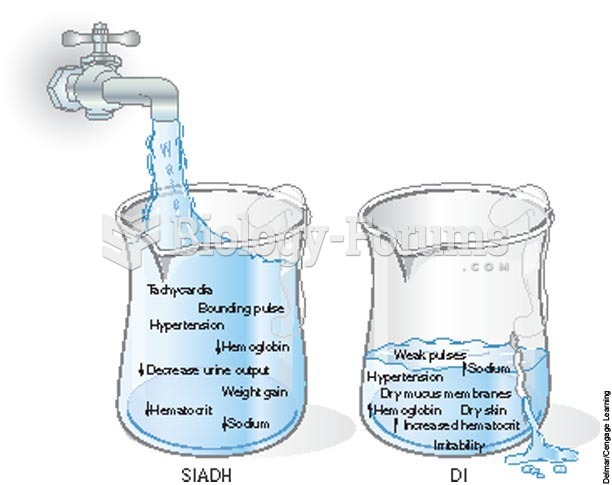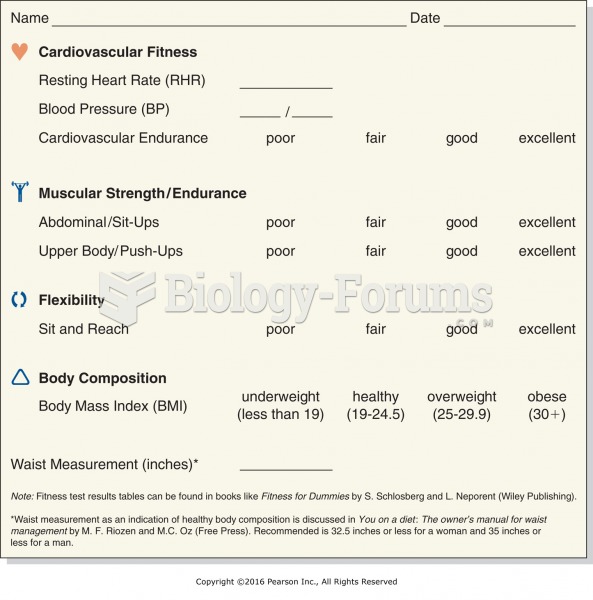|
|
|
The average office desk has 400 times more bacteria on it than a toilet.
The immune system needs 9.5 hours of sleep in total darkness to recharge completely.
Signs and symptoms of a drug overdose include losing consciousness, fever or sweating, breathing problems, abnormal pulse, and changes in skin color.
The Centers for Disease Control and Prevention has released reports detailing the deaths of infants (younger than 1 year of age) who died after being given cold and cough medications. This underscores the importance of educating parents that children younger than 2 years of age should never be given over-the-counter cold and cough medications without consulting their physicians.
Urine turns bright yellow if larger than normal amounts of certain substances are consumed; one of these substances is asparagus.







